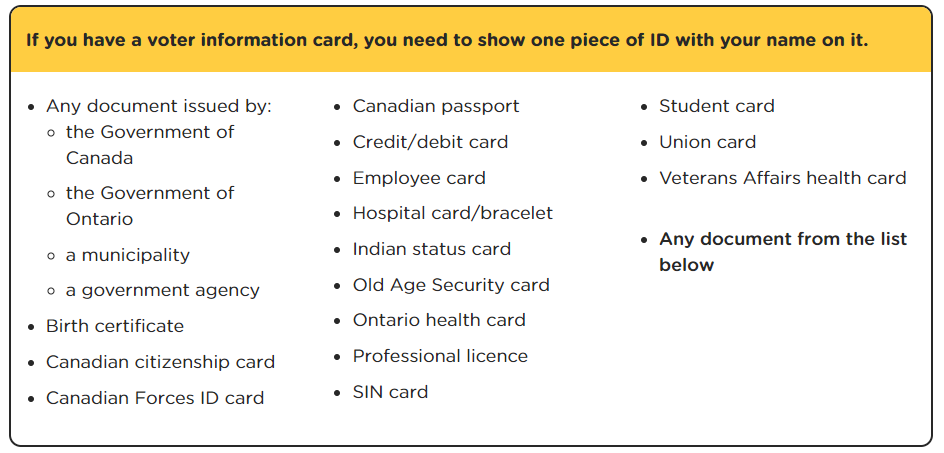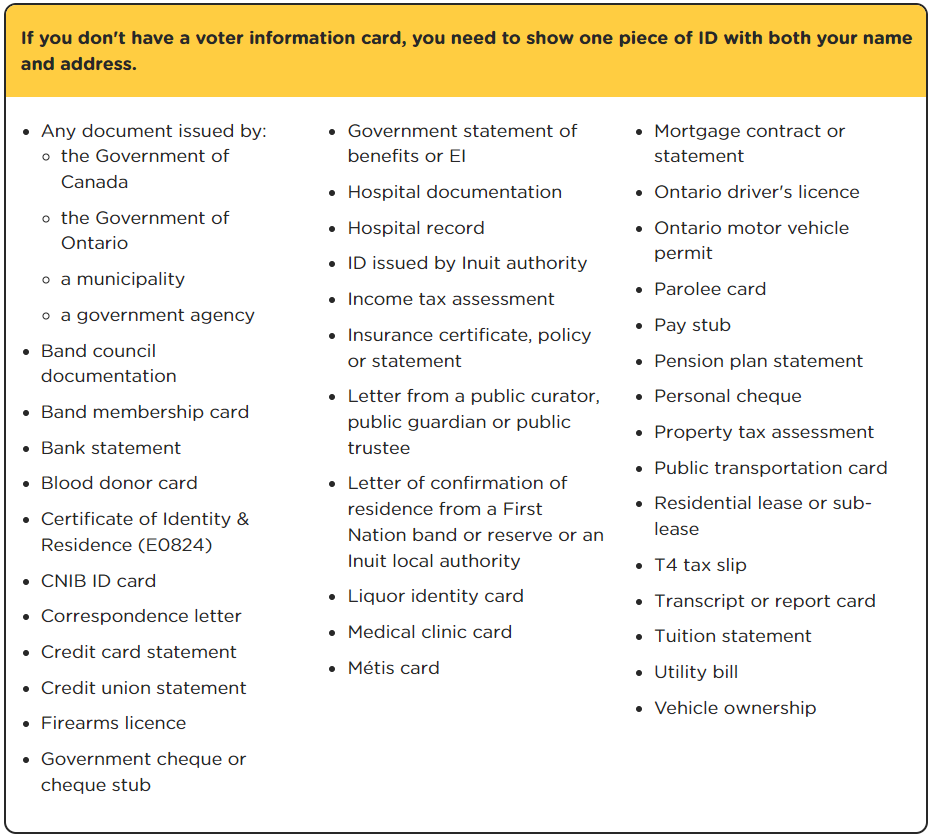Here's what Ottawa voters need to know to vote in the Ontario election
Voters in Ottawa and eastern Ontario head to the polls today to cast their ballot in the 43rd Ontario election.
- For live election poll results, click here for our interactive map, which shows who is ahead in all of Ontario's 124 ridings.
Doug Ford and the Progressive Conservative Party are seeking a second majority mandate after winning the 2018 election.
In Ottawa, the Progressive Conservatives held four of the eight seats at the dissolution of the legislature, compared to three seats for the Liberals and one for the NDP.
In eastern Ontario, the Progressive Conservatives held four seats, the Liberals and NDP each held one seat and one seat was held by Independent MPP Randy Hillier, who is not seeking re-election.
CTVNewsOttawa.ca looks at what you need to know to vote in today's Ontario election.
CANDIDATES
There are eight ridings in Ottawa.
To see who is running in each riding, click here. You can also find information on the Elections Ontario website.
POLLING HOURS
Polling stations in Ottawa and across Ontario will be open from 9 a.m. to 9 p.m.
WHO IS ELIGIBLE TO VOTE?
You must be 18 years of age or older on election day to vote in Ontario. You must also be a Canadian citizen and a resident of Ontario.
WHAT IDENTIFICATION DO I NEED TO VOTE?
If you have a voter information card, you will need one piece of identification with your name on it.
If you don't have a voter information card, you will need to bring one piece of identification that displays both your name and your current address.
 Source: Elections Ontario
Source: Elections Ontario
 Source: Elections Ontario
Source: Elections Ontario
WHERE DO I VOTE?
Elections Ontario says you can vote in person at the voting location assigned to you based on your current residential address.
To find the specific voting location, you can use Elections Ontario’s voter information service.
WHAT HAPPENS AT THE POLLING STATION?
Here is the voting process on Election Day, according to Elections Ontario:
- When you arrive at a voting location, you will be asked to show your ID to an election official who will check if you are registered on the voters list. If you are not on the list, the election official will add you to the voters list and ask you to sign a declaration, Elections Ontario says.
- The election official will then issue you a ballot.
- You will go behind a voting screen to mark your ballot. To vote for your chosen candidate, mark an X in the circle beside their name, and return the completed ballot to the box.
- In a voting location with technology, you will place your marked ballot in to the secrecy folder and take it to an election official operating a tabulator. In a voting location without technology, you will fold your ballot and deposit it yourself into a ballot box.
POLLING STATION CHANGES
The polling station at St. Monica School on Merivale Road has been moved because of damage from the storm.
Elections Ontario says all electors whose voter identification card assigned them to Poll Number 20 should now vote to the Metropolitan Bible Church at 2176 Prince of Wales Drive.
Elections Ontario says voters in Ottawa West-Nepean slated to vote at Merivale High School will now vote at École secondaire publique Omer-Deslauriers.
Voters in Carleton slated to vote at Sacred Heart school will now vote at the Johnny Leroux Arena in Stittsville.
To confirm your polling station, visit the Elections Ontario website.
RESULTS
Initial results are expected to roll in shortly after the polls close at 9 p.m.
Visit CTVNewsToronto.ca’s election map for coverage of all of Ontario’s 124 ridings. CTVNewsOttawa.ca will have complete coverage of all local ridings.
VOTER TURNOUT
Here is a look at voter turnout in the Ottawa-area ridings in the 2018 Ontario election
- Carleton – 62 per cent
- Kanata Carleton – 62.32 per cent
- Nepean – 58.73 per cent
- Orleans – 62.77 per cent
- Ottawa Centre – 61.2 per cent
- Ottawa South – 56.92 per cent
- Ottawa Vanier – 51.47 per cent
- Ottawa West-Nepean – 57.04 per cent
CTVNews.ca Top Stories

Donald Trump says he urged Wayne Gretzky to run for prime minister in Christmas visit
U.S. president-elect Donald Trump says he told Canadian hockey legend Wayne Gretzky he should run for prime minister during a Christmas visit but adds that the athlete declined interest in politics.
Historical mysteries solved by science in 2024
This year, scientists were able to pull back the curtain on mysteries surrounding figures across history, both known and unknown, to reveal more about their unique stories.
King Charles III focuses Christmas message on healthcare workers in year marked by royal illnesses
King Charles III used his annual Christmas message Wednesday to hail the selflessness of those who have cared for him and the Princess of Wales this year, after both were diagnosed with cancer.
Mother-daughter duo pursuing university dreams at the same time
For one University of Windsor student, what is typically a chance to gain independence from her parents has become a chance to spend more time with her biggest cheerleader — her mom.
Thousands without power on Christmas as winds, rain continue in B.C. coastal areas
Thousands of people in British Columbia are without power on Christmas Day as ongoing rainfall and strong winds collapse power lines, disrupt travel and toss around holiday decorations.
Ho! Ho! HOLY that's cold! Montreal boogie boarder in Santa suit hits St. Lawrence waters
Montreal body surfer Carlos Hebert-Plante boogie boards all year round, and donned a Santa Claus suit to hit the water on Christmas Day in -14 degree Celsius weather.
Canadian activist accuses Hong Kong of meddling, but is proud of reward for arrest
A Vancouver-based activist is accusing Hong Kong authorities of meddling in Canada’s internal affairs after police in the Chinese territory issued a warrant for his arrest.
New York taxi driver hits 6 pedestrians, 3 taken to hospital, police say
A taxicab hit six pedestrians in midtown Manhattan on Wednesday, police said, with three people — including a 9-year-old boy — transported to hospitals for their injuries.
Azerbaijani airliner crashes in Kazakhstan, killing 38 with 29 survivors, officials say
An Azerbaijani airliner with 67 people onboard crashed Wednesday near the Kazakhstani city of Aktau, killing 38 people and leaving 29 survivors, a Kazakh official said.


































